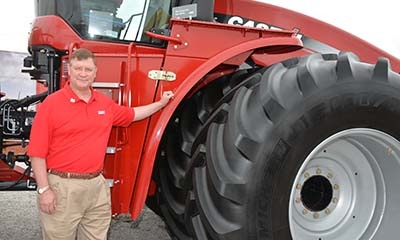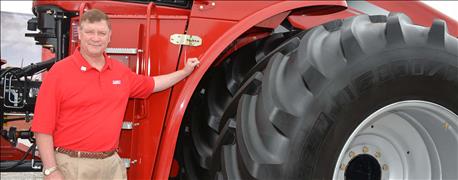
The current glut of used farm machinery has provided attractive prices for late-model combines, large tractors, sprayers and, in some cases, big planters. But it also has dealers reluctant to add used equipment to their lots. That has made it difficult for farmers to trade for new equipment, and manufacturers have noticed.
What’s the best way to find the best deal in this buyer’s market?
While late-model used equipment is selling at discount prices, farmers also are being advised to be patient and assess if they really need to buy now. The glut in much of the used equipment is expected to last a year or more.

Jim Walker, Case IH’s vice president for North America, expects the large supply of used farm machinery to be reduced in the coming year due in part to the slowdown in new equipment production.
“A lot of features can be quite useful to you, but you need to slow down and consider, ‘Is this going to be useful in my operation?’ ” says Mark Hanna, Extension ag engineer at Iowa State University.
He says research is being done on onboard electronic control and data collection systems to determine if they can be used with existing equipment, if user fees are involved or if software upgrades will be required.
Another reason to move slowly is dealers expect a lot of leased equipment will come onto the market and will need to be sold.
“We have to remarket those to our dealers as used machines, and they will have to sell some of those instead of selling new machines,” says Jim Walker, vice president of Case IH North America. “Lease returns have hurt both John Deere and us in the high-horsepower tractor business.”
According to operators of auction markets, farmers are taking advantage of the used market and buying some low-hour pieces. Plus, there have been anecdotal reports of dealers buying pieces at the auction markets and putting them on their lots.
“The dealers have so much inventory right now that they cannot sell the deals they did in the past. Their margins are just too tight to have much negotiating room. It is a very brutal world for both sides of the deal right now,” says Marc Johnson, a partner with the accounting and consulting firm K-Coe Isom.
The glut of machinery came about after several years of farmers upgrading fleets with new equipment when the farm economy was strong and crop prices were high. Manufacturers responded by ramping up production.
Now, farmers have not been in a rush to upgrade because of their newer fleets and the downturn in crop prices. That slowed demand for new equipment. Meanwhile, the used pieces they traded remain on the lots. In addition, the weak farm economy has farmers selling used equipment to raise capital.
Prices for low-hour combines and large tractors are at least $100,000 less than new ones. These are bargains for farmers who can afford it.
Quality concerns
Online auction markets are popular with dealers and farmers to sell equipment, and buyers can find attractive deals.
In addition to the service concerns of buying online machinery, it also may be harder to assess the quality of equipment, as online pictures may not tell the whole story.
“That machine may be 100 miles away, so evaluating that machine from a distance can be more difficult,” says Iowa State’s Hanna. “Some of the things that you would like to inspect, like coolant or engine and transmission oil, are really difficult to get off of the internet. A local, independent third party may be able to do some evaluation work for you.”
While online auctions typically include hours of use, equipment specifications and pictures of key components, the wear in key areas may not be apparent.
“The best they do a lot of times is say ‘good condition’ or ‘average condition’. What does that mean?” Hanna says of auction listings.
K-Coe’s Johnson also advised farmers to be cautious regarding their use of online auctions. While the price may be low and the equipment of good quality, service needs to be considered.
“If you are in Kansas but buy a piece of equipment in Iowa, the local dealer has a harder time giving you priority service over their loyal customers. They might put you farther back in the line when they are full,” he says.
Coming in part three: Tax and warranty details you should know before buying.
About the Author(s)
You May Also Like




